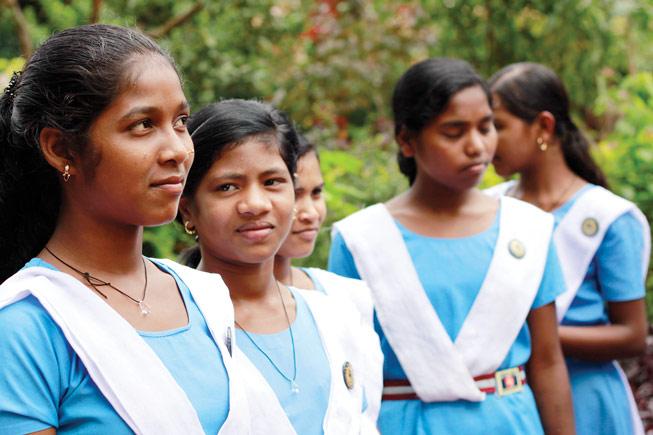Outside very classroom in Kasturba Gandhi Balika Vidhyalaya, a government-run residential girls’ school in the tribal village of Aligaon, is a bulletin board with pages and pages of news from the area. There are stories on alcoholism, failing government programmes, and the harsh realities of life here, deep inside Odisha’s impoverished Koraput district. But these are not stories from major national or state newspapers, or local media organisations. They are produced by a group of students at the school who are part of Odisha’s Child Reporters programme.
On a sunny Tuesday in August, Santakar Chelapila—a 46-year-old, ever-smiling Koraput native and freelance journalist—walked into a classroom at the school to check on the young journalists. The girls stood up to greet him, and he started asking what they’d been writing about. The answers ranged from homework woes to a village’s difficulty accessing clean drinking water.
Chelapila, alongside a small group of socially conscious citizens, started training a handful of Koraput students in the basics of journalism and posting their stories on school walls in 2004. The idea soon attracted support from UNICEF, and the Child Reporters programme was formally launched the following year. Volunteers trained a hundred children, and asked them to write every day in special notebooks. “At first, they wrote about school,” Chelapila said, “but then they dove into the bigger social issues.” Soon selected stories were also being published in a bi-monthly magazine called Ankurodgam—roughly, “the sprouting of the seed”—distributed to parents, district officials and journalists. The project grew, and by 2007 it involved over five thousand children in 539 schools, whose best contributions were published in a monthly inset, edited by children, in Anupam Bharat, one of Odisha’s leading vernacular dailies.
In 2012, the Odisha government adopted the Child Reporters programme, mandating that all government schools in the state incorporate it into their curricula. Such high-level endorsement should have meant a triumph, but the state’s funding for the expanded project proved insufficient, and in keeping with its policy UNICEF withdrew its support for what was now a government programme. The project declined. Earlier publishing arrangements fell through, and stories were again appearing only on school walls. Most of Odisha’s schools have yet to implement the programme, which now survives in only about two hundred Koraput schools. Chelapila now spends his time travelling from school to school, fighting to sustain this remarkable social experiment. He remains optimistic, and said that several non-profit groups have expressed interest in helping the programme.
“As a journalist, I had been expressing what I thought and it made me happy,” Chelapila told us. “I thought that particularly could also happen with children.” He said the programme encourages children to be curious, confident and engaged with their communities, and also offers fresh insights into Odisha’s social challenges. “So we publish anything they have to say.”
Sitting in a circle in the school’s well-kept gardens, a group of Aligaon students—many of whom come from poor tribal families, and are the first in their families to attend school—told us how they mixed reporting with activism. “I wrote about the consumption of liquor in my village,” Anjana Jani, an eight-grader, told us in breathless Odiya. “We tried to convince people to stop drinking so much alcohol. At first the villagers didn’t agree, but eventually they started paying attention.”
“We saw that these children became much more aware of their surroundings and started making changes on their own,” Lalatendu Acharya, a professor at Purdue University who coordinated UNICEF support for Child Reporters, said over Skype. “In one instance, the children took up sanitation in their village. They talked with elders and healthcare providers and actually had toilets built and got the village cleaned.” The project’s supporters claim other successes too. In some cases, Chelapila told us, the work of child reporters has convinced more parents to send their children to school; in one instance, they prompted Koraput district officials to compensate farmers whose crops were destroyed by floods.
Among the reporters of Aligaon, the programme has clearly expanded imaginations. The girls take turns reading the daily newspaper that the principal pins to a desk outside his office. “We read it every day to find out what’s happening in the world,” Jani said. “We learn about different things like what happens in the case of an accident, or about the kinds of exploitation that women face.” But the girls aren’t content simply absorbing information. “We want to write like they do in the newspapers,” Jani added. “We can’t stay silent. We want people to be updated and aware of what’s happening around them.”
– See more at: http://caravanmagazine.in/lede/wall-posts#sthash.6ANRsqE7.dpuf

